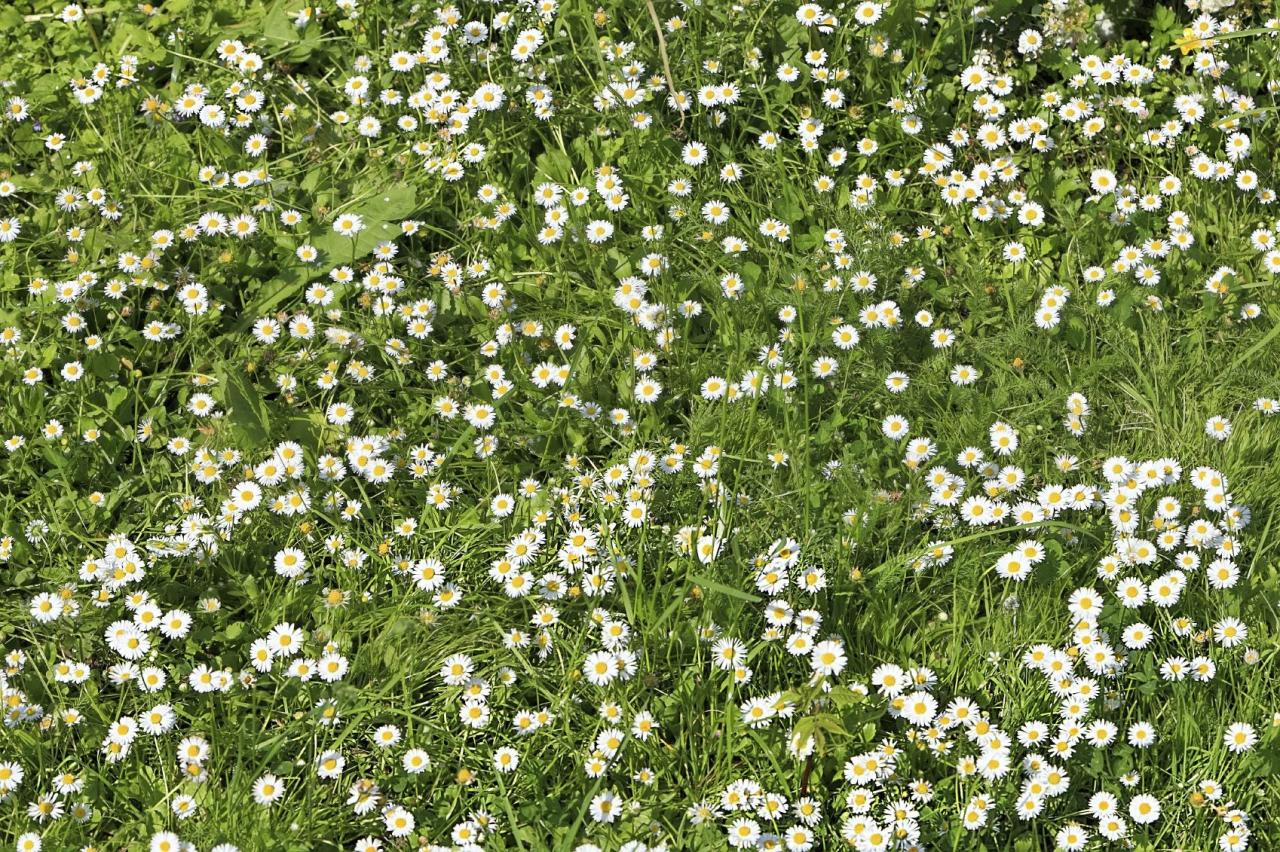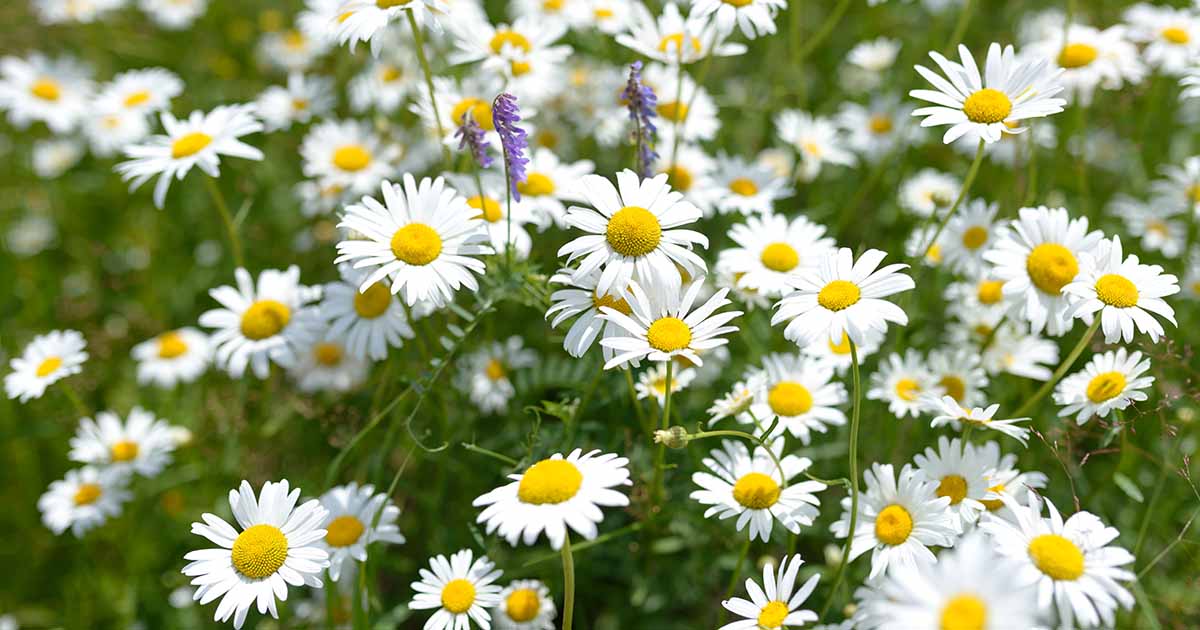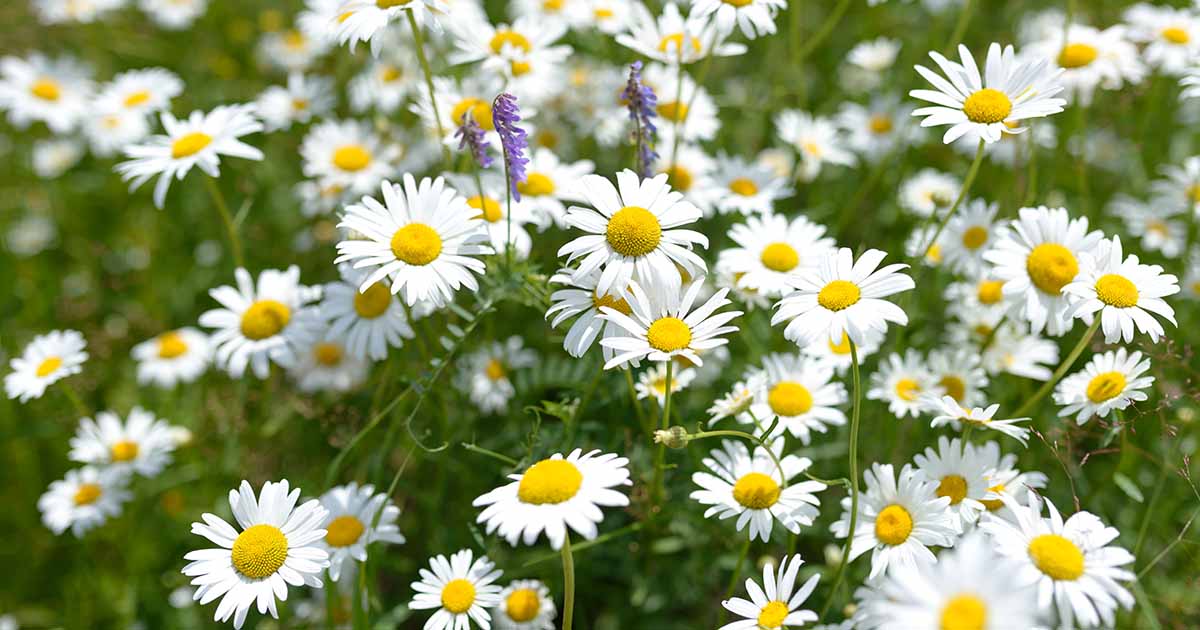Chamomile Lawn: Best Practices For Mulching And Watering is a comprehensive guide to creating and maintaining a beautiful and low-maintenance lawn alternative. Unlike traditional grass lawns, chamomile lawns offer a unique aesthetic appeal with their delicate white blooms and soft, fragrant foliage.
These lawns require less water and fertilizer, making them an eco-friendly choice for environmentally conscious homeowners.
This article will explore the key aspects of chamomile lawn care, including mulching techniques, watering strategies, and routine maintenance. We’ll delve into the benefits of different mulching materials, discuss optimal watering frequencies, and provide practical tips for controlling weeds and pests.
By following these best practices, you can create a thriving chamomile lawn that will add beauty and tranquility to your outdoor space.
Watering Techniques for Chamomile Lawns: Chamomile Lawn: Best Practices For Mulching And Watering

Chamomile lawns, known for their delicate beauty and calming fragrance, require careful watering techniques to thrive. Understanding the optimal watering frequency and methods is crucial for maintaining a lush and healthy lawn.
Watering Frequency for Chamomile Lawns
The optimal watering frequency for chamomile lawns depends on factors such as climate, soil type, and the age of the lawn. Generally, chamomile lawns require deep watering once or twice a week, especially during hot and dry periods. However, it’s important to avoid overwatering, which can lead to root rot and fungal diseases.
Deep Watering and Avoiding Overwatering
Deep watering is essential for chamomile lawns as it encourages deep root development, leading to a more drought-tolerant lawn. Deep watering involves applying enough water to soak the soil to a depth of 6-8 inches, allowing the roots to access moisture effectively.
Overwatering, on the other hand, can suffocate the roots and create an environment conducive to fungal growth. Signs of overwatering include yellowing leaves, wilting, and a musty smell from the soil.
Watering Methods for Chamomile Lawns
Several watering methods can be used for chamomile lawns, each with its own advantages and disadvantages.
Drip Irrigation
Drip irrigation is a highly efficient watering method that delivers water directly to the root zone, minimizing water waste. It involves using a network of pipes and emitters to deliver a slow and steady flow of water to the base of plants.
Drip irrigation is particularly beneficial for chamomile lawns as it helps to prevent overwatering and encourages healthy root growth.
Just as meticulous care is needed to maintain a lush chamomile lawn, the art of Bonsai demands precision in every aspect, from pruning to watering. Similarly, a well-mulched chamomile lawn benefits from consistent watering, ensuring the soil retains moisture and the plants thrive.
Hand Watering
Hand watering using a hose or watering can can be effective for smaller chamomile lawns. It allows for targeted watering and ensures that all areas receive adequate moisture. However, hand watering can be time-consuming and may not be suitable for larger lawns.
Tips for Conserving Water
Conserving water is crucial for maintaining a healthy chamomile lawn while minimizing environmental impact.
- Water early in the morning to minimize evaporation.
- Use a rain gauge to monitor rainfall and adjust watering accordingly.
- Mulch the lawn with organic materials like compost or shredded bark to help retain moisture.
- Avoid overwatering and only water when the soil is dry to the touch.
Maintaining a Chamomile Lawn

A chamomile lawn, with its delicate flowers and sweet fragrance, requires specific maintenance practices to thrive. Just like any other lawn, it needs regular care to maintain its health and beauty. This section will guide you through the essential aspects of maintaining a chamomile lawn, ensuring it remains lush and vibrant.
Routine Maintenance Schedule
A well-structured maintenance schedule is key to a thriving chamomile lawn. It involves a combination of tasks performed at regular intervals.
- Mowing:Mowing is essential for maintaining the desired height and preventing the lawn from becoming overgrown.
- Watering:Adequate watering is crucial, especially during dry periods, to ensure the lawn receives sufficient moisture.
- Fertilizing:Regular fertilization provides the lawn with the nutrients it needs for healthy growth.
- Weeding:Controlling weeds is essential to prevent them from competing with chamomile for resources.
- Pest Control:Monitoring for and addressing pests promptly is crucial to prevent damage to the lawn.
Mowing Chamomile Lawns
Mowing is a crucial part of chamomile lawn maintenance. Chamomile is a low-growing plant, and mowing too short can damage the plant and inhibit its growth.
Chamomile lawns offer a beautiful and fragrant alternative to traditional grass, but they require specific care to thrive. Mulching regularly helps retain moisture and suppress weeds, while proper watering is crucial for maintaining a healthy lawn. For a comprehensive guide to year-round care, check out our article on How To Care For Your Chamomile Lawn Year-Round.
By following these best practices for mulching and watering, you can ensure your chamomile lawn flourishes throughout the seasons.
- Mowing Height:The ideal mowing height for chamomile lawns is 1 to 2 inches.
- Mowing Frequency:Mow your chamomile lawn every 1 to 2 weeks, depending on the growth rate.
- Sharp Blades:Use a sharp mower blade to ensure a clean cut and prevent damage to the plants.
- Mulching Mowers:Mulching mowers are ideal for chamomile lawns as they chop up the grass clippings and return them to the lawn as a natural fertilizer.
Controlling Weeds and Pests
Weeds and pests can threaten the health of your chamomile lawn. Early detection and appropriate control measures are essential.
- Weed Control:Hand-pulling weeds is the most effective way to control them in a chamomile lawn.
- Organic Weed Control:Organic herbicides, such as vinegar or corn gluten meal, can be used to control weeds without harming the chamomile plants.
- Pest Control:Monitor your lawn for signs of pests, such as insects or fungal diseases.
- Organic Pest Control:Use organic pest control methods, such as insecticidal soap or neem oil, to control pests without harming beneficial insects.
Fertilizing Chamomile Lawns
Regular fertilization provides your chamomile lawn with the nutrients it needs for healthy growth.
- Fertilizer Type:Use a balanced fertilizer with a low nitrogen content, such as 10-10-10 or 5-10-5.
- Fertilization Frequency:Fertilize your chamomile lawn every 6 to 8 weeks during the growing season.
- Application Method:Apply fertilizer evenly over the lawn using a spreader.
- Avoid Over-Fertilizing:Over-fertilizing can damage the lawn and lead to excessive growth.
Troubleshooting Common Chamomile Lawn Issues

While chamomile lawns are relatively low-maintenance, they can still encounter issues that require attention. Understanding the common problems and their solutions can help you maintain a healthy and vibrant lawn.
Browning
Chamomile lawns are prone to browning, especially during periods of drought or excessive heat. This browning can also be caused by fungal diseases, pests, or improper fertilization.
- Drought Stress:Insufficient watering can lead to dehydration and browning. During hot and dry periods, ensure adequate watering to prevent the soil from drying out completely.
- Excessive Heat:Prolonged exposure to extreme heat can also cause browning. Consider providing shade during the hottest part of the day, especially in regions with intense summers.
- Fungal Diseases:Fungal diseases, such as powdery mildew or rust, can cause browning and discoloration. Avoid overwatering and ensure proper drainage to prevent fungal growth.
- Pests:Pests like grubs or snails can damage the roots and leaves, leading to browning. Use organic pest control methods or consult a professional for effective pest management.
- Improper Fertilization:Over-fertilization can cause browning and damage the delicate chamomile plants. Use a balanced fertilizer specifically designed for lawns and follow the recommended application rates.
Sparse Growth, Chamomile Lawn: Best Practices For Mulching And Watering
Sparse growth in chamomile lawns can be caused by various factors, including poor soil conditions, inadequate sunlight, or competition from weeds.
Maintaining a healthy chamomile lawn involves a delicate balance of mulching and watering, ensuring the soil retains moisture without becoming waterlogged. Similar to the careful approach required for cultivating money plants in humid conditions, Best Tips For Growing Money Plants In Humid Conditions , understanding the specific needs of your chamomile lawn is key.
Proper mulching helps regulate soil temperature and moisture, preventing excessive evaporation, just as proper ventilation is crucial for money plants thriving in humid environments.
- Poor Soil Conditions:Chamomile thrives in well-drained, fertile soil. Improve soil quality by adding compost or other organic matter to enhance drainage and nutrient content.
- Inadequate Sunlight:Chamomile requires at least 6 hours of sunlight daily. Ensure your lawn receives sufficient sunlight by removing any obstructions or pruning nearby trees or shrubs.
- Weed Competition:Weeds can compete with chamomile for nutrients, sunlight, and water, leading to sparse growth. Regularly remove weeds to maintain a healthy chamomile lawn.
Prevention
Preventing common chamomile lawn issues is crucial for maintaining a healthy and vibrant lawn.
- Proper Watering:Water deeply but infrequently, allowing the soil to dry slightly between waterings. This encourages deep root growth and improves drought tolerance.
- Regular Maintenance:Mow the lawn regularly to maintain a healthy height and prevent excessive growth. Avoid mowing too low, as it can stress the plants.
- Soil Amendments:Add organic matter, such as compost or aged manure, to improve soil fertility and drainage.
- Weed Control:Regularly remove weeds to prevent competition and maintain a healthy lawn. Consider using organic weed control methods to avoid harming the chamomile plants.
Closing Summary
Creating a chamomile lawn is a rewarding endeavor that offers numerous benefits. By implementing the best practices Artikeld in this article, you can enjoy a low-maintenance, eco-friendly lawn that adds a touch of elegance and fragrance to your landscape.
From choosing the right mulch to understanding optimal watering techniques, this guide provides all the information you need to successfully cultivate and maintain a beautiful chamomile lawn.
Answers to Common Questions
What are the different types of chamomile suitable for lawns?
There are two main types of chamomile suitable for lawns: Roman chamomile (Chamaemelum nobile) and German chamomile (Matricaria recutita). Roman chamomile is the preferred choice for lawns due to its creeping habit and tolerance for foot traffic.
How often should I fertilize my chamomile lawn?
Chamomile lawns generally require less fertilizer than traditional grass lawns. A light application of compost or a balanced organic fertilizer once or twice a year is usually sufficient.
What are some common pests that affect chamomile lawns?
Chamomile lawns are generally resistant to pests. However, they can be susceptible to aphids, spider mites, and leafhoppers. You can control these pests with organic insecticides or by introducing beneficial insects like ladybugs.
Can I overseed my chamomile lawn with grass?
It is not recommended to overseed chamomile lawns with grass. Chamomile and grass have different growth habits, and grass can quickly outcompete chamomile, resulting in a traditional grass lawn.
